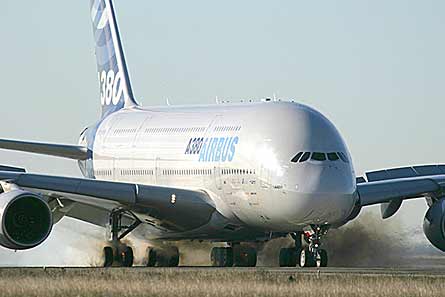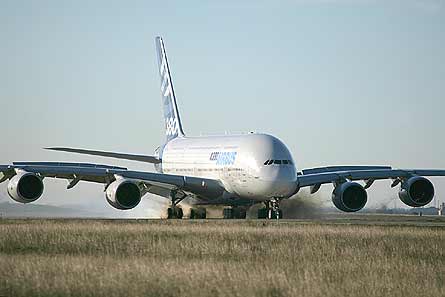Airbus says the potentially hazardous maximum energy rejected take-off demonstration for the A380 that it undertook last weekend was a “non-event”, with the aircraft and systems behaving exactly as predicted.
“The test went exactly as planned,” says Airbus chief test pilot Jacques Rosay, who was at the controls of Rolls-Royce Trent 900-powered A380 MSN001 (F-WWOW) alongside vice-president Airbus flight test division Claude Lelaie for the trial at the Istres test airfield in southern France on 4 March (pictured below). In total, seven crew were on board the A380 including a flight engineer representing the European Aviation Safety Agency.
|
|---|
 |
To comply with the certification requirements, the aircraft, which was equipped with 90% worn brakes, completed a 5km (three mile) taxi during which it made four stops - one of which was to simulate the higher residual idle thrust of the Engine Alliance GP7200-powered aircraft. With an all up weight of 575t the A380 was accelerated down the runway to 166kt (307km/h) -the equivalent V1 speed for this take-off weight- before being brought to a halt using wheel brakes and spoilers alone, with the engines at idle.
“We were then required to taxi to the turn pad and wait 5min before any intervention is allowed. The tyres began to deflate at around 3min as planned,” says Rosay, adding that everything performed as expected there was no fire or damage to the aircraft.
“We achieved 120mJ [88,507ft-lb], slightly more than the target of 119mJ,” says Rosay. “At the end the brakes were pink.”
Later during the day, the A380’s Honeywell wheels, brakes and Bridgestone tyres were replaced ahead of the ferry-flight back to Toulouse on 5 March.
For more A380 pictures, please visit our Airbus A380 page
Source: FlightGlobal.com
























